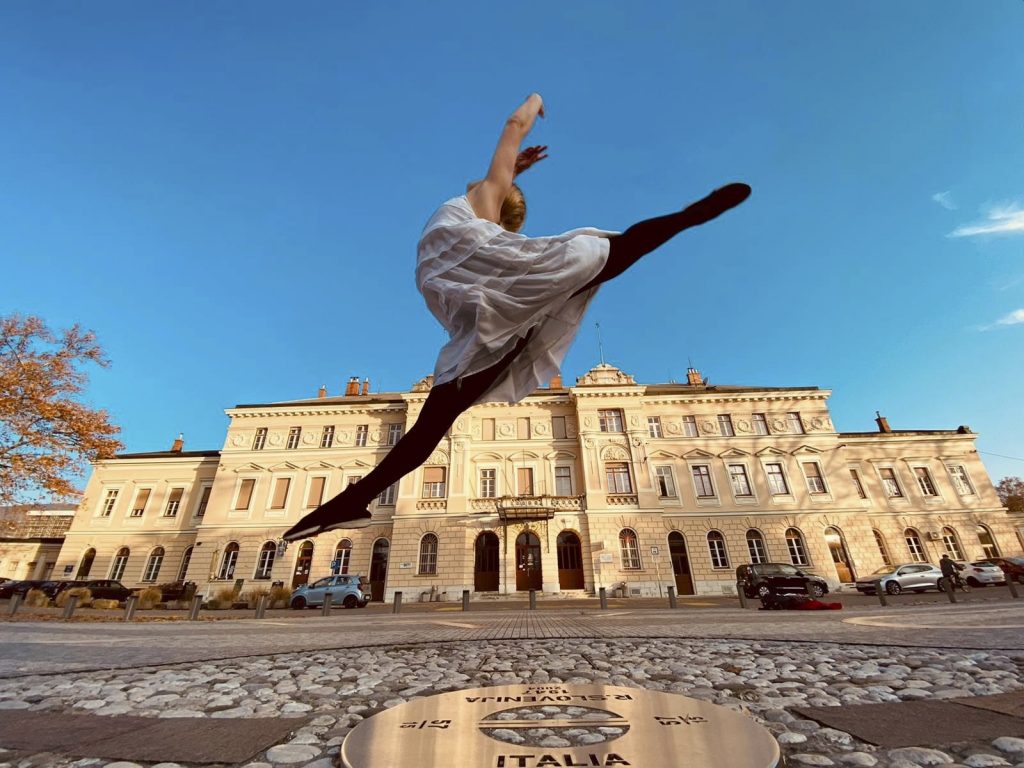Breaking the Spell of a Sleepy Town

Vision and Idea-Driven Approaches to Innovative Policy Implementation and Legitimisation
Written by: Klemen Miklavič
Photo Credit: Maja Murenc
Nova Gorica and Gorizia, neighbouring towns on the Slovenia-Italy border, have overcome the shadows of 20th-century wars and ideologies to unite in a shared vision. Today, they’re shaping a cross-border European region with Nova Gorica and Gorizia as a regional hub, uniquely spanning two states.
In the heart of an ambitious local government lies a mission to reshape lives through bold, innovative policies. At its core, this mission thrives on the power of ideas, propelling a tangible vision that guides the selection of coherent policies. The ultimate aspiration? To enhance the lives and welfare of citizens, igniting a wave of positive transformation across the community.
In the policy realm, ideas serve as the foundational elements to a well-defined vision that guides the choice of coherent policies. This guidance aims to facilitate the desired change and development, with the ultimate goal of improving the well-being of citizens. Yet, the realization of all-encompassing, coherent, and future-oriented policy measures demands not only a clear vision but also effective engagement with the public. Mobilising support from diverse interest groups and sectors for long-term goals often involves crafting a vision that deeply resonates with citizens, evoking a strong sense of identification. This could be achieved through a blend of rational arguments and tapping into citizens’ values, imaginations, and aspirations.
The case of Nova Gorica and Gorica/Gorizia(1) exemplifies the significance of allowing ideas to mature before crystallising them into a guiding vision for policies. Despite being situated in two different countries, Slovenia and Italy, these towns united to envision a shared future. This innovative approach has resulted in the fusion of resources, synchronised policies, and collaborative investments, all contributing to the region’s economic, social, and cultural prosperity. Yet, this choice, although seemingly obvious due to their historical and geographic ties, faces hurdles rooted in the past to gaining legitimacy.
Legacy of Decline and Darkness
For nearly 50 years, Nova Gorica and Gorizia grew side by side, yet separated by the Italy-Yugoslavia border. These lands had been haunted by the memories and enduring resentments stemming from conflicts that inflicted unprecedented suffering on the local population during the first half of the 20th century. These painful chapters were followed by the complex dynamics of the Cold War’s ideological divide.
The local economy revolved around trade, border services, transportation, and logistics. The border’s geopolitical significance, lying between the eastern and western bloc, with Rome and Belgrade investing in these territories, brought numerous benefits. However, with Slovenia’s independence in 1991 and its subsequent EU entry, these advantages gradually waned. The two cities lost their political significance, and along with it the economic benefits that once thrived.
While Nova Gorica (Slovenia) managed to find temporary solace in the gambling industry, Gorizia (Italy) suffered a significant population decline. The closure of border-related jobs, particularly in the military, police, and customs services, prompted officials, civil servants, and their families to move away. This exodus further exacerbated the challenges faced by Gorizia.
From Gradual to Disruptive Transformation
Amid growing citizen demands to break free from the confines of being “sleepy towns,” the leaders of Nova Gorica and Gorizia confronted a pressing issue. The increasing trend of an aging population, surpassing the national average in both towns, underscored the need for change. Pursuing gradual, incremental, changes posed the risk of further relegating these once vibrant border communities into the slumber of unremarkable peripheral towns, each situated at the edge of its respective country.
To usher a new era of development, a radical intervention and fresh resources became imperative. Yet, such a transformation demanded a strong and shared vision. And the evolution of ideas into such a vision requires time.
A Vision Nurtured Across Generations
The seed of transformation began taking root in the 1960s. Then the Mayors of Nova Gorica and Gorizia from different political backgrounds – one a Communist, the other a Christian Democrat – initiated discussions without the permission of their respective governments in Belgrade and Rome. This marked the start of a gradual reconciliation process. Over the ensuing decades, visionary mayors nurtured relationships and delicately cultivated the inception of a vision: a shared future without borders.
This gradual process culminated when the European Commission designated Nova Gorica and Gorizia as the European Capital of Culture for 2025. This milestone serves as the perfect catalyst for a decisive leap forward in realising their vision, paving the way for its implementation.
After years of symbolic gestures and the ceremonial dismantling of border fences, the time has come for more ambitious joint projects. Nova Gorica and Gorizia aspire to establish themselves as de-facto one cross-border European Capital of Culture. Their vision aims to combine resources and leverage respective advantages to fuel social, cultural, and economic development, drawing inspiration from the prosperous Gorizia region during the Austro-Hungarian Empire. These towns can tap into their potential by aligning their strategies across various domains, encompassing housing, healthcare, urban development, infrastructure, transportation, water management, waste disposal, energy utilisation alongside university campuses, research facilities as well as student services. Furthermore, the encompassing region brims with potential across sectors including tourism, hi-tech industries, automotive manufacturing, wine and olive oil production, as well as logistics and transportation.
Looking Ahead
Today, as Nova Gorica and Gorizia embark on a new chapter in their shared journey, they cast a light on the transformative potential of collaboration and visionary ideas. Their tale underscores how communities can bridge historical divisions and nurture ideas across generations to shape a vibrant future. In their pursuit of transformation, these towns invite us to recognise the enduring relevance of the power of innovation and a shared vision, guiding policy implementation and breaking free from the spell of stagnation.
(1)The town holds a name in two languages, Italian and Slovene. The presence of the Slovene community in this part of Italy makes Slovene an official language. For the sake of simplification, we will henceforth use the name “Gorizia.”
This is the first in a series of blog entries written by Klemen Miklavič.

